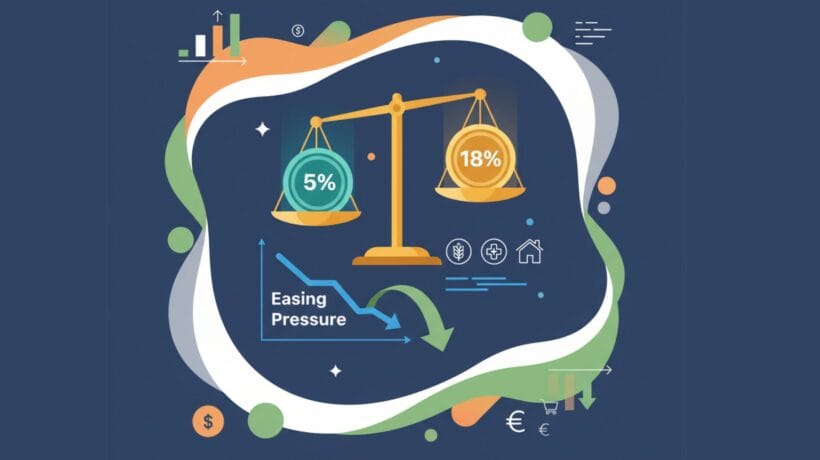GST Council’s Two-Rate Structure Expected to Ease Inflation
Key Highlights:
✅ The GST Council’s simplified structure with two slabs – 5% and 18%, plus a special 40% slab for sin and ultra-luxury goods – became effective on September 22, 2025.
✅ Economists project the move will reduce headline inflation by 50–90 basis points over the next year.
✅ Essentials such as food items, daily-use products, and key consumer goods were moved from 18% down to 5%, directly easing household budgets.
✅ Ultra-luxury and sin goods remain taxed at 40%, maintaining the government’s stance on luxury consumption.
✅ The reform coincided with Navratri, aligning with efforts to boost private consumption in H2 FY26.
Impact on Consumers & Businesses
🛒 Consumers will benefit from immediate price reductions on everyday items, improving affordability during the festive season.
📈 Businesses in FMCG, retail, and consumer durables are expected to see increased demand due to improved purchasing power.
💼 The simplified GST system will help reduce compliance burdens, particularly for MSMEs.
Why It Matters
This GST 2.0 move not only strengthens India’s tax system but also supports growth by putting more disposable income into households. The focus on consumption-led growth is expected to play a critical role in India’s economic momentum for FY26.
Offer – Navratri Special 🎉
✨ This Navratri, enjoy 25% OFF on Pvt Ltd & Trademark fees. Contact us today to make the most of this limited-time offer!
FAQ'S
Q1. What are the new GST rates effective from September 22, 2025?
Two main slabs – 5% and 18%, with a special 40% slab for sin and ultra-luxury goods.
Q2. How will this reform impact inflation?
Economists expect headline inflation to reduce by 50–90 basis points over the next year.
Q3. Which items moved to the 5% slab?
Daily essentials, food items, and other household goods previously taxed at 18% are now at 5%.
Q4. Are luxury goods affected?
Yes, ultra-luxury and sin goods continue to be taxed at 40%.
Q5. How will businesses benefit?
Simplified compliance, reduced tax burden on essentials, and higher consumer demand during festive seasons.





